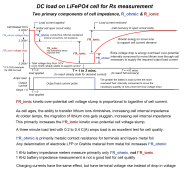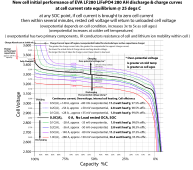dwilker788
New Member
- Joined
- Dec 8, 2022
- Messages
- 1
HI,
Newbie question here, but I have 24 v system with a 3000 w inverter. I have it hooked up to the washer and dryer. Last night using the dryer it dropped to 25.9 v when it finished and now it says 26.6 v in the morning. No charge as it was overnight. Just trying to figure out why the voltage went up overnight and what charge the batteries really have?
Thanks!
Newbie question here, but I have 24 v system with a 3000 w inverter. I have it hooked up to the washer and dryer. Last night using the dryer it dropped to 25.9 v when it finished and now it says 26.6 v in the morning. No charge as it was overnight. Just trying to figure out why the voltage went up overnight and what charge the batteries really have?
Thanks!




